In the field
Fieldwork is a basic step in Earth Science. Often, the terrain is difficult for vehicles to access and it is not uncommon to have to make a good hike before arriving at a site.
Before anything else, it is good to remember some basic safety rules:
Never go into the field alone.
Pay close attention to the weather forecast, which can be very changeable, especially in the mountains.
Tell someone where you are going and when you will be back.
Never assume that you are strong, and think about how long the return journey will take, as you are bound to be more tired than when you left.
Do not venture into the mountains without a qualified and experienced guide.
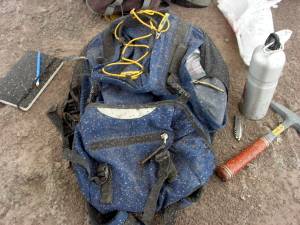
– Classic hiking equipment
It is imperative to provide easily adaptable and modular clothing (provide for hot and cold) as well as a resistant mackintosh.
The hiking shoes are imperative and help avoid many “boo-boos” on slippery and uneven terrain. Ankles are easily twisted, so good ankle support is essential. Good hiking boots can be found just about everywhere now, especially in sports shops where there is a wide choice. It is also essential to have something to cover your head to avoid sunburn. A wide-brimmed hat is ideal as it also covers the back of the neck.
A good hiking backpack is also essential. It must be large in volume and above all very strong. Above all, you should not neglect the way you load your bag. Indeed, the load must be well balanced so as not to hurt your back and shoulders and thus make walking easier.
Probably the most important point, you should think about taking a good water supply, the ideal is the aluminium water bottle of one litre which is very resistant while remaining relatively light. Plastic bottles are too fragile and heat up very quickly, so they should be avoided as much as possible. Don’t hesitate to take a second water bottle (even if it makes the bag heavier) when the weather is hot. Also take a few cereal bars, which are always useful if you feel a little “hungry”.
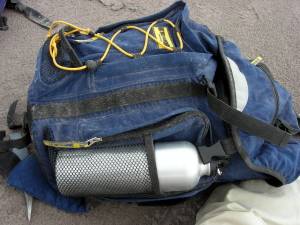
– The geologist’s hammer
The geologist’s hammer is the basic tool of any geologist. It is usually made of a single block of very strong steel with a flat side and a sharp side. I highly recommend the Estwing brand which offers high quality hammers with a lifetime guarantee. They are a bit expensive to buy (around 50 euros) but well worth it. Other manufacturers offer geologist hammers that are just as good (Forgecraft for example). Beware, these hammers are very good for hitting rocks but are absolutely not suitable for hitting a chisel. For this, it is better to use a small sledgehammer. In any case, the use of a geologist’s hammer requires the use of gloves and protective glasses because of the projections of very sharp rock fragments when striking.
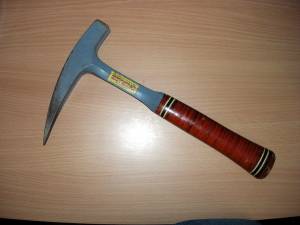
– The field magnifier
The field magnifier is used to make initial observations of details. It must be robust, small and resealable to avoid scratches. There are many models but a magnification of x10 is more than sufficient. The best magnifiers are aplanatic (no deformation of objects) and achromatic (no iridescence).
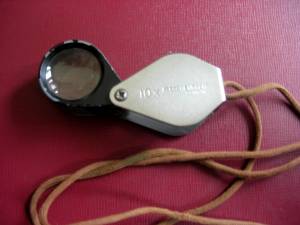
– The 1:25,000 topographic map
In France, the topographic maps of the IGN are very precise and often make it possible to do without GPS. They are not very expensive. To avoid damaging them too quickly, it is preferable to protect them in waterproof plastic sleeves or even to make photocopies to write down the information directly on them.
– The compass with clinometer for inclination measurement
The compass with clinometer has several functions in the field in geology. It is often used as a classical compass to orientate one’s map and to make sights (for triangulation). It is also used to measure the orientation and dip of geological objects such as strata, veins, faults and fractures,…
– The field notebook
The field notebook is essential for noting everything and anything. You can’t remember everything, especially several years later. That’s why it’s important to keep your notebook well (and date the pages). Sometimes a little diagram is better than a long speech. It should be very strong and made of waterproof paper. These notebooks are quite expensive, but after spending a day in the rain doing fieldwork, you will realise the advantage over a conventional notebook. The most popular brand is “Rite in the Rain”. Ideally, you should write in pencil as the ink does not like rain and humidity.
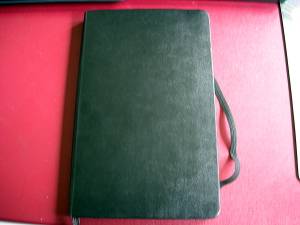

– The GPS
The GPS is not essential when you have a good topo map, but might as well live with the times, it does some service. Allows to manage its routes, locate precisely points of interest, all coupled with a mapping software.
– The camera
It is always useful to have a camera in the field. This camera should be compact (not take up too much space in pockets or bag), light (weight is the enemy of the walker) and robust (falls are never far away). This means that the most suitable models for field work are compact digital cameras. You can already take very good photos with these little devices. So let’s avoid reflex and bridge cameras, which are heavier and, above all, much more expensive. The little trick is to always bring a plastic bag like a “freezer bag” to protect the camera from rain but also from dust. For my part, I use a Nikon coolpix 5900 with 5 M pixels which takes good pictures and resists very well to the field conditions. And yet it has seen a lot of water and volcanic ash. The only maintenance consists of a light blowing with a bottle of dry air each time I return from the field.
Leave a Reply